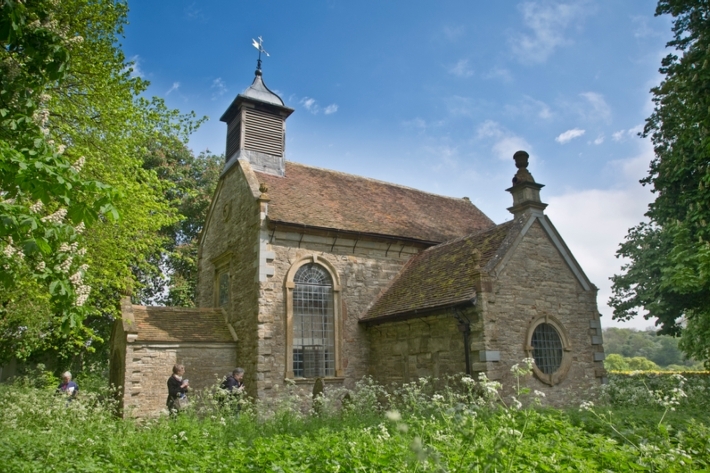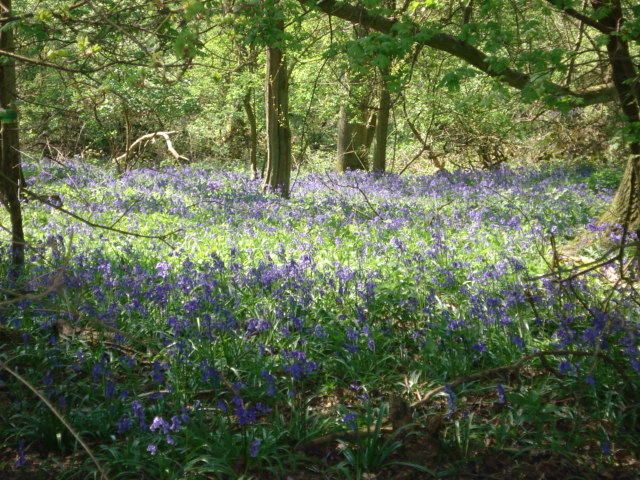Richard Lutz gets lost in Shakespeare country.

One thing that annoys me is those brown signs on the M40 that tells visitors they are now “entering Shakespeare country.”
Obviously there is no such thing. Shakespeare country is really Warwickshire or, more enigmatically, the geography of your imagination. The rest is marketing. But a slow walk – and on pain of death it cannot be anything else – in the woods and fields near where he lived is a timeless affair. A beautiful one, too.
I started in Wilmcote, where Shakespeare’s mother grew up. It used to be a sleepy faming hamlet back in the day. Now her family home entertains mass tourism. But, like a lot of Britain, get away from the honeytraps and you are alone.
I took bridleways and tiny paths that wound through the budding greenery to Aston Cantlow, renowned for its two pubs and St John the Baptist. That’s the church with a 800 year old squat tower where the aforesaid Shakespeare’s mother, Mary Arden, was married. The church is quiet, and as ever with English country graveyards, its 500 quiet stones stand witness over this green and pleasant land just beginnng to bloom and blossom.
We climb through Withycombe Wood which snakes to the south. It is on a leafy hillside facing west to the warm afternoon sun. This copse, which dates back to16c England, has paths that are usually mucky with sucking mud. The dry weather has hardened the paths and they are cracked and hard. The walk, a timeless loop, slows to the pace of sap in winter. Around us, you can imagine where Shakespeare picked up his love of what is around him in the woods and fields of remote South Warwickshire. He described it in A Midsummer Night’s Dream when Oberon, the fairy king, says:
I know a bank where the wild thyme blows
Where oxlip and the nodding violet grows
Quite overcarpeted with luscious woodbineWith sweet musk roses and with eglantine.
These are the flowers and undergrowth of this part of the county, here in ‘Shakespeare land’ where I stand at the edge of the wood looking over green fields toward tidy villages such as Hasilor and Walcote and Upton.
 I know damn well I am looking at a scene that the young writer gazed out on on a spring day some 430 years ago before he hoofed it down to London.
I know damn well I am looking at a scene that the young writer gazed out on on a spring day some 430 years ago before he hoofed it down to London.
The bluebells, now slightly fading as above, carpet the woodland just as the woodbine did in the late 16 century. The wild roses, the eglantine, are ready to bud. The violets actually do nod and move imperceptibly in the spring breeze.
You can’t get much else from the scant facts of Shakespeare’s life around here. No one, not the academics, the writers, nor the geeks, knows. It is all conjecture except for a handful of disparate facts. Remember the young lad had that intriguing decade or so when he was just disappeared to modern history. There are documents that show when he was born, where he went to school, when he had children, but ittle else. I keep going through the wood. There is the smell of fox and we see one lurking near a barley field as it climbs up the hillside.
Below is All Saints’ Church (top of article) that used to serve the now-vanished farming village of Billeseley. It is rumoured – so much of Shakespeare’s early life is rumoured – that he married Anne Hathaway here in 1582. A nearby sign admits that three other Warwickshire churches say the same thing.
It is a forgotten church, a thousand-year old building sitting amid a small copse surrounded by sheepfields and crops. Inside is a remnant of an ancient sculpture that used to grace the main door. It shows a soldier being attacked by a snake and a dragon, but protected by a dove. The decorated stone is all coils and curves and sinuous fingers. There is no doubt it has Viking influence. Who knows why. History sleeps in this church, this stone. All around us is silent history. We stop looking and listen.
There is a breeze that makes a rustling noise. And, faintly, there is that breeze through the oaks. There is the sound of a church bell from another hamlet. A small animal hurries through a hedge. And in the distance, there is a constant low hum. I think it’s a train. But I’m not sure.



enjoyed your pen…
too many places to see, so little time